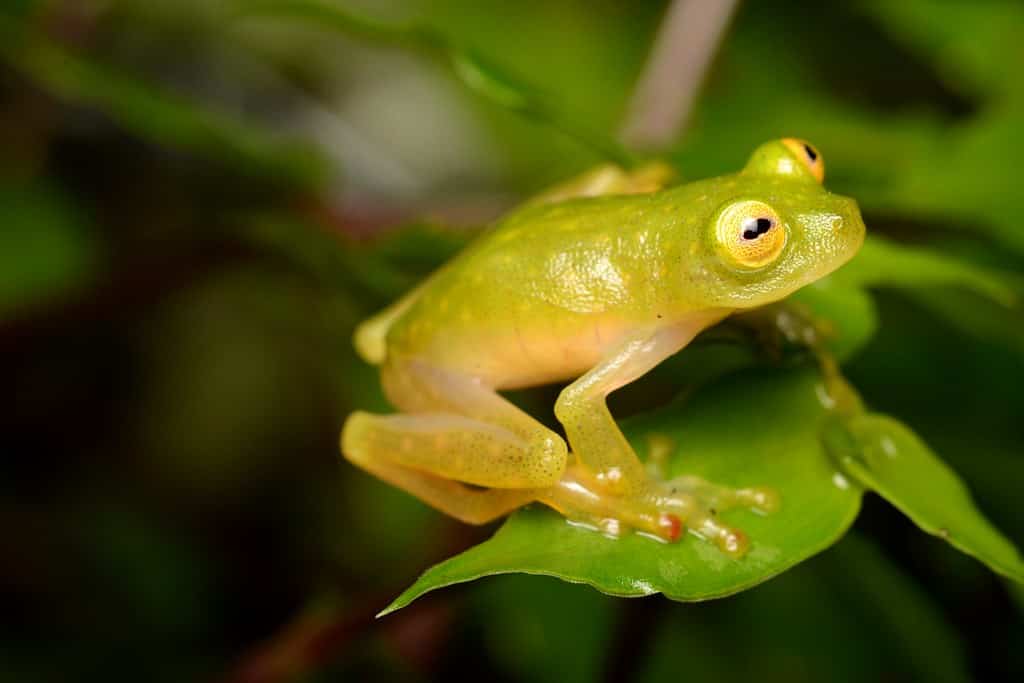Glass frogs in the family Centrolenidae get their name from their translucent skin and muscles that blend them into the forests of Central and South America. If you flip them over and look at their underbelly, you may even get to see their hearts, livers, and intestines. Now, a study has found the mechanism behind this uncanny ability.

While asleep, Fleischmanni’s glass frogs (Hyalinobatrachium fleishmanni) siphon off 89% of their brightly colored red blood cells into crystal sacs in their liver, which then reflect the incoming light and make the frogs appear invisible. With the blood cells out of sight, the frogs become more transparent and avoid their predators much easier.
“When glassfrogs are resting, their muscles and skin become transparent, and their bones, eyes and internal organs are all that’s visible,” Carlos Taboada, a study co-author, said in a statement. “These frogs sleep on the bottoms of large leaves, and when they’re transparent, they can perfectly match the colors of the vegetation.”
Frogs and a secret skill
Fleischmanni’s glass frogs are one of the more than 100 species of so-called ‘glass frogs’ because of their translucent skin and organs. In 1980, a study found that their bellies lack pigment, so their internal organs are visible. Then, in 2020, another study found that this translucency is actually a technique they use to camouflage from their predators.
Now, thanks to this new study, we know these small frogs (measuring between 20 and 30 millimeters in length) go into stealth mode when they are asleep. And we also know how they pull it off. When they hit the snooze button during the day, they send most of their blood cells into sacs in their liver, which then makes them nearly transparent.
“Whenever they want to be transparent, which is typically when they’re at rest and vulnerable to predation, they filter nearly all the red blood cells out of their blood and hide them,” Sönke Johnsen, a study co-author, said in a statement. “Whenever the frogs need to become active again, they bring the cells back into the bloodstream.”
Red cells reflect green light, so removing them from circulation allows the frogs’ skin to transmit more light. The researchers found that, on average, these frogs become 34% to 61% more transparent in sleep. While common in sea creatures such as jellyfish, transparency in vertebrates is extremely rare — making the finding all the more relevant.
For their study, the researchers worked with a lab at Duke University that specialize in photoacoustic microscopes. The lab helped the team to do optical spectroscopy and photoacoustic microscopy on 13 of these frogs. Optical spectroscopy can detect light throughout the electromagnetic spectrum, extending beyond the range of visible light.
The results raise questions about how the frogs can store almost all their red blood cells in their liver without damaging their peripheral tissues. One possible next step could then be to study this mechanism and eventually apply it to vascular tissue in humans, the researchers conclude.
“We can learn more about the glassfrog’s physiology and behavior, or we can use these models to optimize imaging tools for biomedical engineering,” Jesse Delia,” study co-author, said in a statement. “This started because we thought this frog was doing something weird with its blood, and it led to productive collaborations.”
The study was published in the journal Science.









